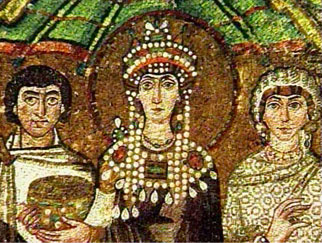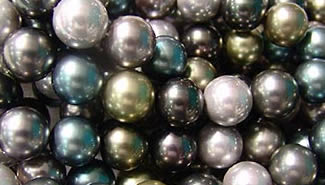The Pearl. June’s traditional birthstone.
The pearl has been treasured among people and cultures for thousands of years- far longer than any gemstone the comes from the earth. This is because there is something special about the pearl that sets it apart for all the other gemstones. Pearls are the only gem that is not formed deep within the earth and are considered the world’s oldest gem! They are formed in sea creatures called mollusks, which include clams, oysters and mussels.

History:
Most likely, pearls were discovered by ancient people that were searching for food along the seashore. We know that pearls have been valuable to people for thousands of years thanks to pearl jewelry found in the sarcophagus of a Persian princess that dates back to 420 BC. A pearl is naturally formed when a small foreign object gets inside the mollusk, and as a natural defense mechanism, the mollusk will produce layers of material that form around the object. The very existence of pearls could be considered a “freak accident”. You may have heard the term, ‘cultured pearl’ before. A cultured pearl is when the foreign object is purposely placed into the mussel. Cultured pearls became a thing as Nnatural pearls were becoming scarcer as the waters became more polluted and mollusk-producing areas were exhausted and overworked
Pearls through the Ages:
Ancients:
- Often worn as a protective amulet to stop the soul from leaving the body
- Symbolic of the moon, had magical powers

- Egyptians embellished their buildings, clothing, jewelry, and even tombs with pearls.
- The Greeks and Romans held the pearl very highly and believed that the goddesses Venus (Roman version) and Aphrodite (Greek version) emerged from oyster shells in the sea.
- Represented purity and used as currency in China
Middle Ages:
- By law, only royalty and high nobility are allowed to wear pearls
- Adorned wigs, clothing and decorative objects
- Didn’t mind wearing imitation pearls when supplies for natural ones ran low
- Renaissance era incorporated baroque pearls into designs, which are irregular shaped.
- Knights would wear them into battle for good luck
19th Century:
- Height of fashion for growing middle class
- Became a status symbol for anyone with money to burn
- Pearls appear in brooches and chokers
- Long strands of layered pearls were popular in the 1920s
- Cultured pearls and costume pearls became popular
Today, there are four main types of pearls:
- Akoya: the classic. Grown off the coast of Japan for over 100 years. When you picture a strand of pearls, most likely thinking of Akoya
- Freshwater: the fashion-forward pearl. Known for white and pastel colors, and untraditional shapes. Very affordable. Often come in a variety of shapes and dyed a variety of colors
- Tahitian: the dark, exotic pearl. Very rare, only naturally dark pearl. Grown in
 the French Polynesia.
the French Polynesia. - 4. South Sea: Rolls Royce of pearls. Grown in Australia, the Philippines, and Indonesia. Range in color. Largest saltwater pearls grown today. Come in a variety of shapes, because of how large they are, finding a perfectly round south sea pearl is extremely rare.
Symbolism & Mystical Properties:
Along with being the gem representing births in the month of June, the pearl also symbolizes the 3rd and 30th anniversaries of marriage. Pearls can  symbolize numerous things- mainly depending on its color. For example, white pearls have long symbolized purity, which is why the gem has always been popular as bridal jewelry. Because the gem originates in the water, and because of its round shape and glimmering white color, it’s not surprising that the pearl has long been symbolic of the moon.
symbolize numerous things- mainly depending on its color. For example, white pearls have long symbolized purity, which is why the gem has always been popular as bridal jewelry. Because the gem originates in the water, and because of its round shape and glimmering white color, it’s not surprising that the pearl has long been symbolic of the moon.
For a gem that has been present in human culture for thousands of years, the pearl has lost little value and is still a popular and prized gem to own today. Although June has the beautiful pearl to represent it, it’s actually one of those lucky months that get two gems. Along with one of the world’s oldest gems, June gets one of the world’s newest gems associated with it. Check back for part II to learn more of June’s other birthstone, Alexandrite.
Sources: https://www.timemaps.com/civilizations/the-vedic-age/ http://www.thejewelleryeditor.com/jewellery/article/history-of-pearls-pearl-jewellery-rings-earrings-necklaces/ https://www.gemsociety.org/article/history-legend-pearls-gems-yore/ http://visforvintage.net/2013/06/07/history-of-pearls/
